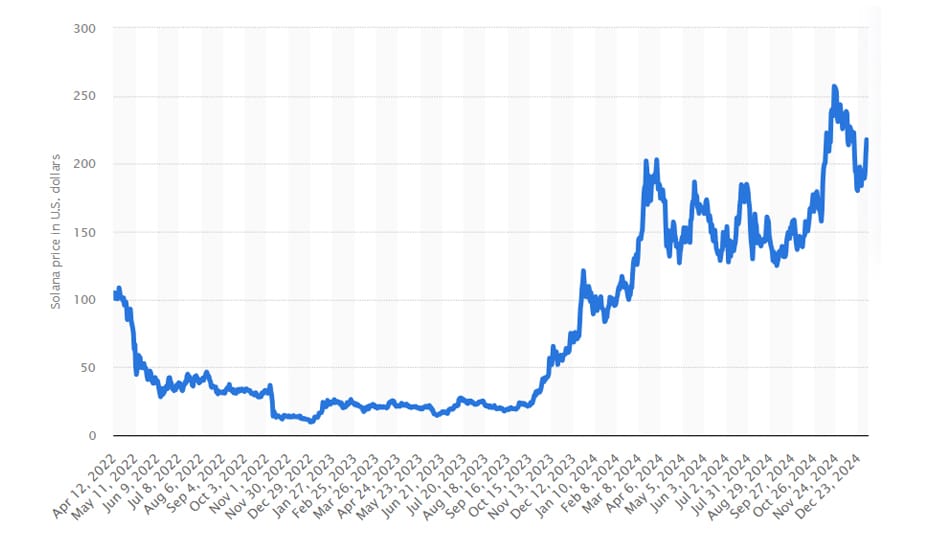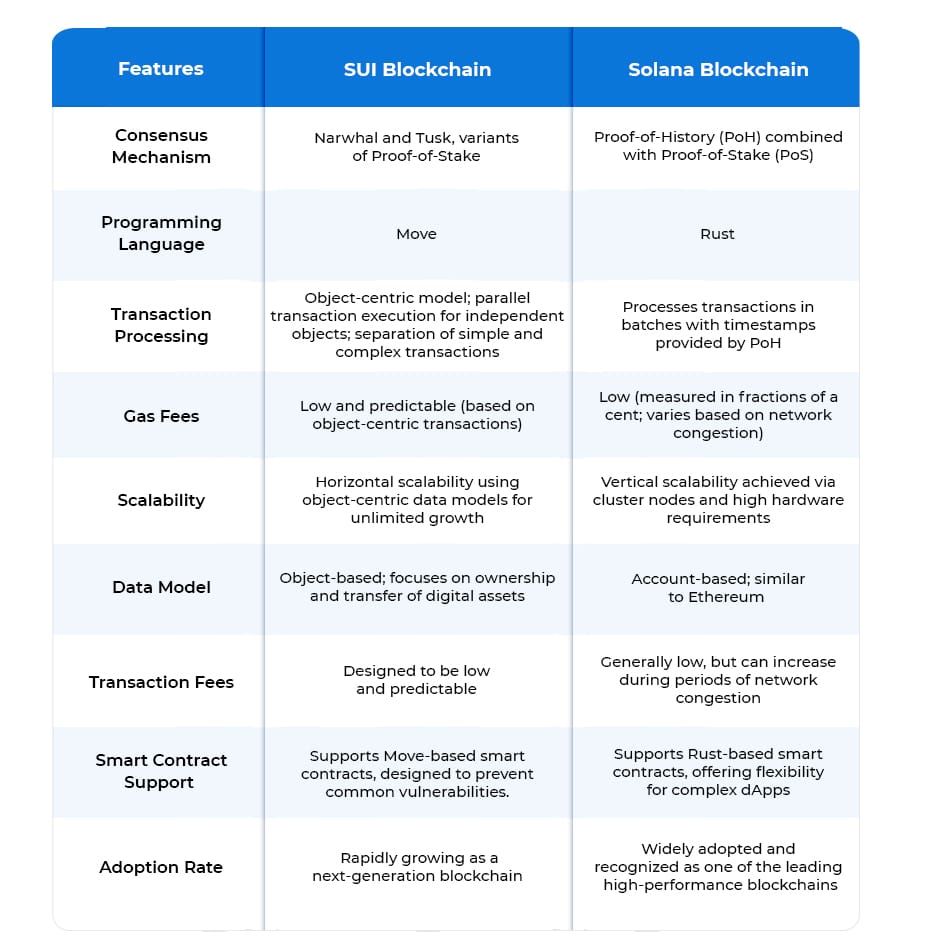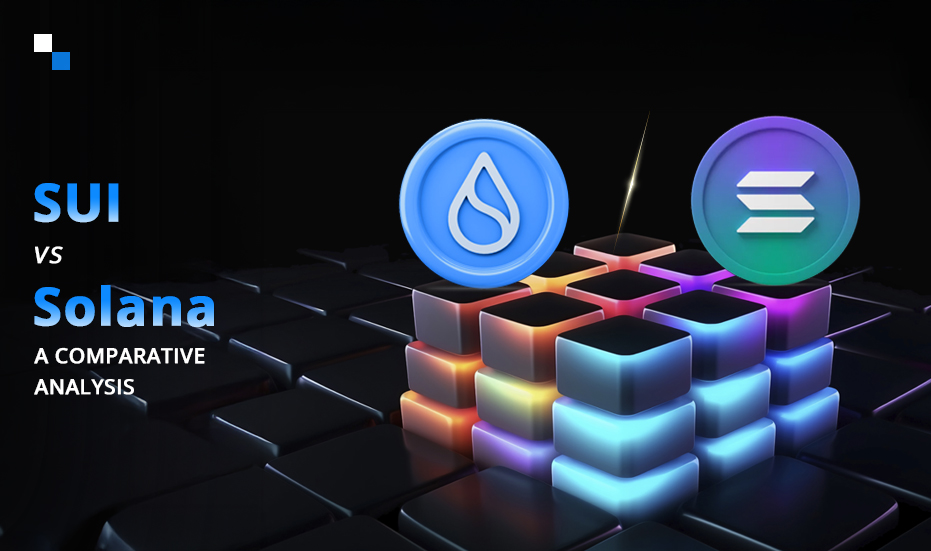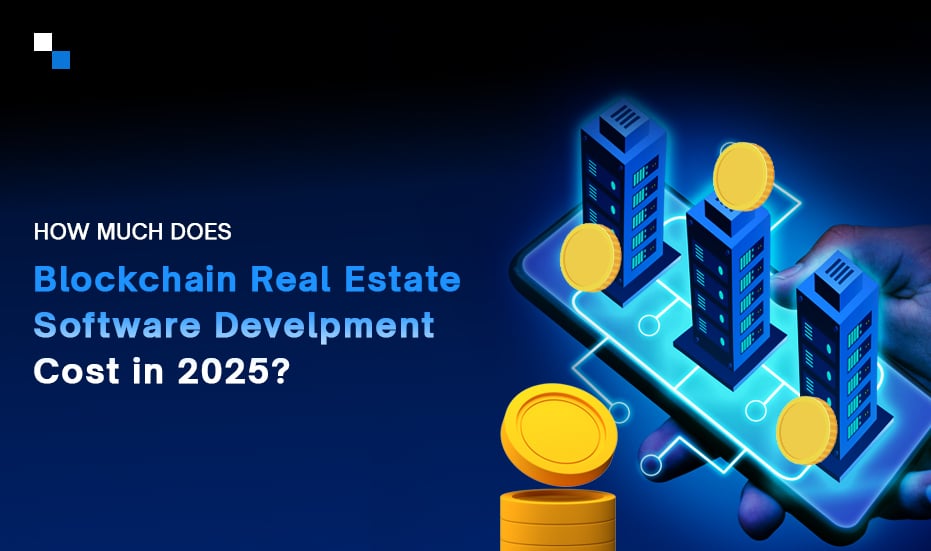
Popular Use Cases of Metaverse in Healthcare for 2025
January 6, 2025
Decoding the Meme Coin Matrix: Top Meme Coin Development Trends 2025
January 6, 2025Both SUI and Solana have solidified their positions as top layer 1 blockchain platforms in 2024 and their trajectories suggest that they will maintain their top rankings in 2025.
Statista highlights that Solana’s value tripled in the summer of 2021, driven by the NFT craze and DeFi community growth. By January 2, 2025, the price of SOL had fallen back to $207.77, nearly identical to where it stood at the start of 2021.

Solana (SOL) price per day from April 9, 2022 to January 2, 2025
Electric Capital developer data shows that Sui experienced an impressive 219% rise in monthly active developers between the start of 2024 and July 1st, maintaining close to 1,400 active developers in June. This surge underscores the growing interest in Move development and the Sui platform.
 Highlights from the Electric Capital Developer Report
Highlights from the Electric Capital Developer Report
Imagine you’re building a high-performance dApp that will handle thousands of transactions per second with minimal latency. While SUI blockchain development offers parallel transaction processing for seamless scalability, Solana blockchain development delivers ultra-fast speeds and cost efficiency.
However, it is challenging to choose an ideal one for dApp development in 2025. This blog provides an in-depth analysis of SUI vs Solana while highlighting their strengths to help you determine which blockchain is the best fit for your project.
SUI vs Solana: A Comparative Analysis in 2025
The pointers shared below will help you understand the primary differences between SUI vs Solana:
-
Consensus Mechanisms
SUI Blockchain Development: The SUI blockchain employs the Narwhal-Tusk consensus mechanism, a Directed Acyclic Graph (DAG)-based model combined with Byzantine Fault Tolerance. This enables parallel transaction execution and enhances scalability while maintaining security.
Solana Blockchain Development: Solana stands out with its Proof-of-History (PoH) consensus, complemented by Proof-of-Stake (PoS). PoH timestamps transactions and ensures seamless sequencing & rapid processing while making it ideal for throughput-intensive applications.
-
Programming Language
SUI Layer 1 Blockchain: SUI leverages the Move programming language, designed to prioritize safety and asset integrity. Move eliminates common vulnerabilities, such as reentrancy attacks, making it a preferred choice for secure SUI blockchain development.
Solana Layer 1 Blockchain: Solana relies on Rust and C for its smart contract development. Rust is widely recognized for its high performance and flexibility, enabling complex dApp creation with minimal latency.
-
Transaction Speed and Scalability
SUI Blockchain Development: The SUI blockchain achieves high scalability through its object-centric model which allows parallel execution of independent transactions.
Solana Blockchain Development: Solana is known for its high transaction throughput of up to 65,000 TPS, thanks to its innovative PoH mechanism. Its cluster architecture ensures vertical scalability for diverse applications.
-
Cost Efficiency
SUI Layer 1 Blockchain: With predictable gas fees and an architecture designed to minimize congestion, SUI offers businesses a cost-effective platform for deploying applications.
Solana Layer 1 Blockchain: Solana boasts minimal transaction costs, typically measured in fractions of a cent, making it an attractive choice for cost-conscious developers and enterprises.
-
Developer Tools and Community Support
SUI Layer 1 Blockchain: SUI provides developers with advanced tools, including Move Studio, a dedicated IDE for smart contract development. Its growing community fosters innovation and collaboration.
Solana Layer 1 Blockchain: Solana offers a range of developer tools, such as Solana CLI, Web3.js, and Rust SDKs, alongside a vibrant and established developer community.
-
Energy Efficiency
SUI Layer 1 Blockchain: SUI’s DAG-based model offers high energy efficiency aligned with sustainability goals while maintaining performance.
Solana Layer 1 Blockchain: Solana also emphasizes energy efficiency while ensuring its high-speed operations consume minimal resources compared to traditional blockchains.
-
Use Cases
SUI Blockchain Development: SUI excels in gaming, NFT marketplaces, and digital asset platforms, offering seamless ownership and transfer functionalities tailored to these industries.
Solana Blockchain Development: Solana has proven its capabilities in DeFi platforms, tokenized assets, and NFT ecosystems, making it a go-to platform for enterprises in these sectors.
Tabular View: SUI vs Solana

When to Choose SUI for dApp Development
- High Performance and Parallel Processing: If your dApp requires managing multiple simultaneous transactions, such as in gaming or supply chain solutions, SUI’s parallel processing architecture is a standout feature.
- Enhanced Security: SUI’s Move programming language reduces the risk of vulnerabilities which makes it suitable for applications involving sensitive data.
- Future-Ready Technology: Businesses looking for cutting-edge innovation and a platform poised for rapid growth will find SUI an excellent choice.
When to Choose Solana for dApp development
- Established Ecosystem: If you require access to a vast network of developers, integrations, and tools, Solana’s mature ecosystem is a significant advantage.
- DeFi and High-Throughput Applications: Solana’s high transaction speed and low fees make it ideal for decentralized finance platforms and applications handling frequent transactions.
- Global Community Support: With an extensive developer base, Solana offers resources and guidance that can accelerate development timelines.

Conclusion: Choose the Right Blockchain in 2025
Both SUI and Solana represent exceptional options for layer 1 blockchain development in 2025. SUI blockchain development is ideal for projects prioritizing parallelization, security, and next-generation innovation. Meanwhile, Solana blockchain development shines in applications requiring ultra-fast transactions, cost-efficiency, and a well-established ecosystem.
Ultimately, the choice between SUI and Solana depends on your project’s unique requirements, scalability needs, and long-term vision. Collaborating with a trusted blockchain development company like Antier can further streamline the decision-making process and ensure successful implementation.



